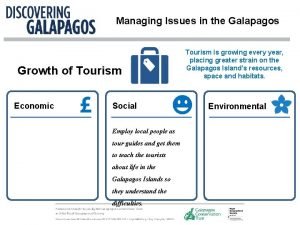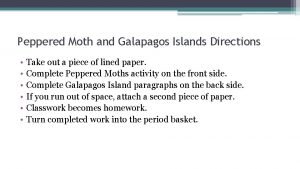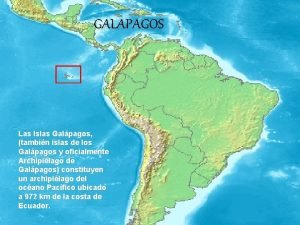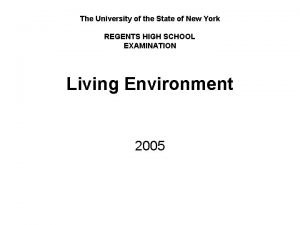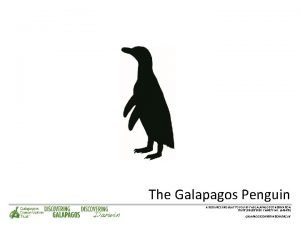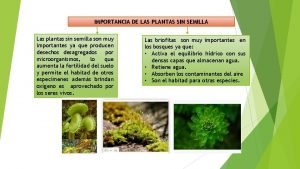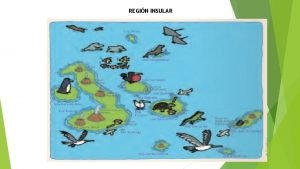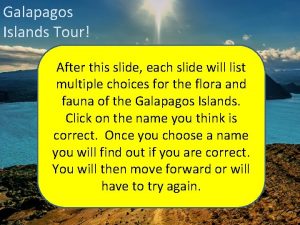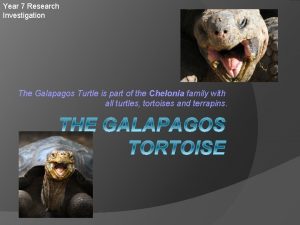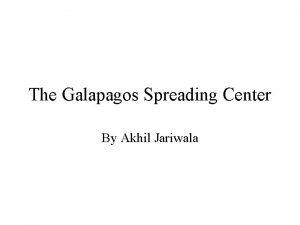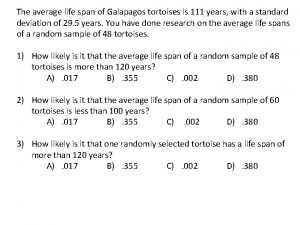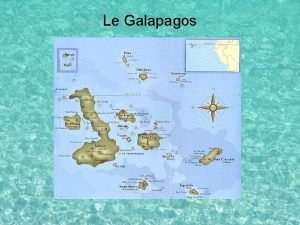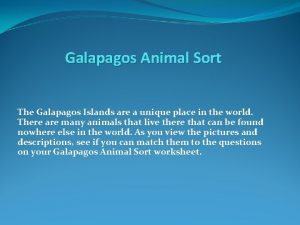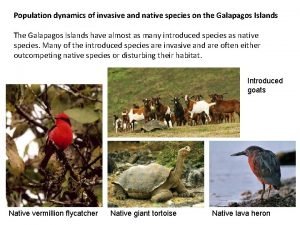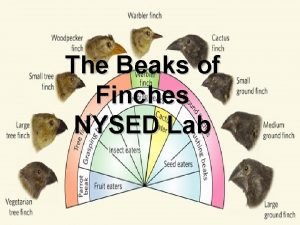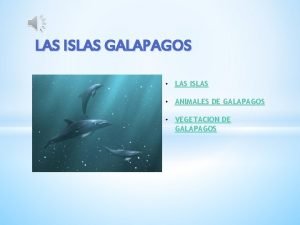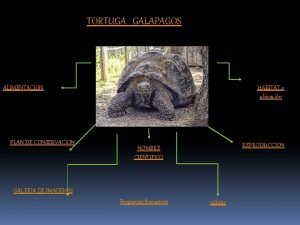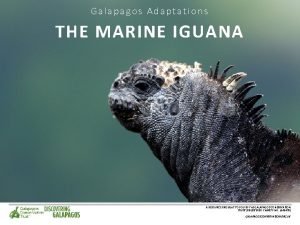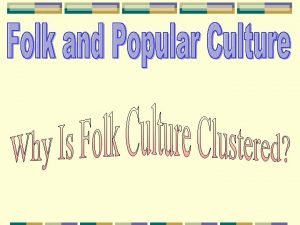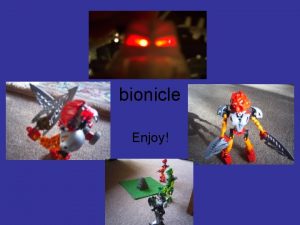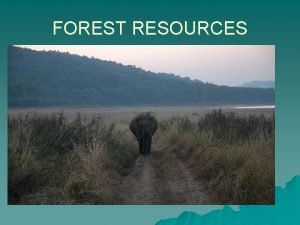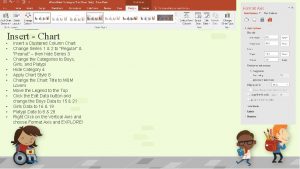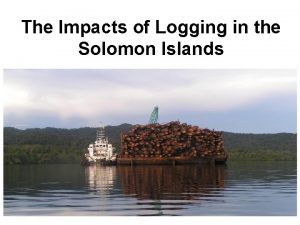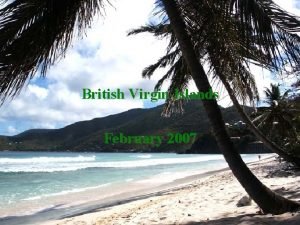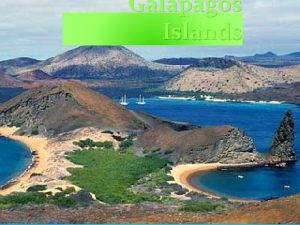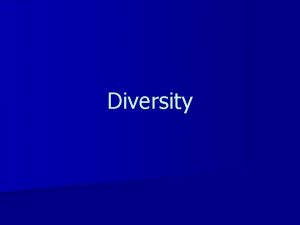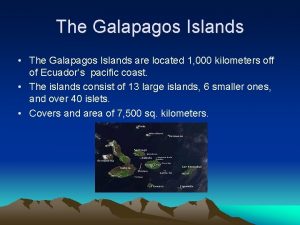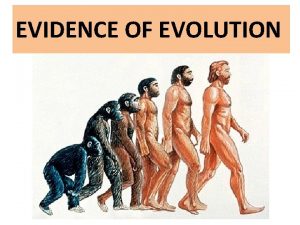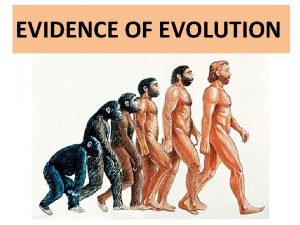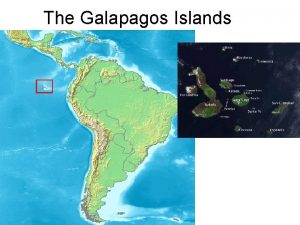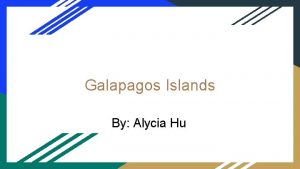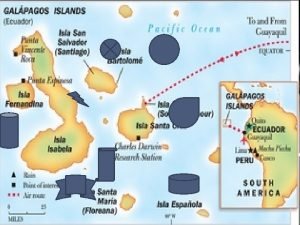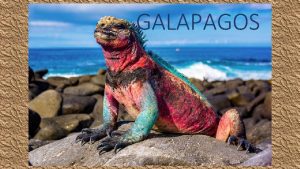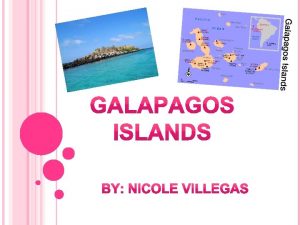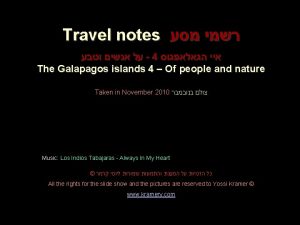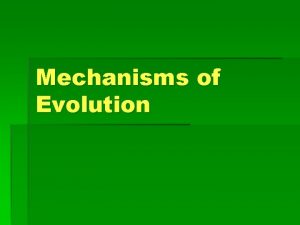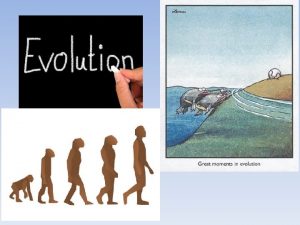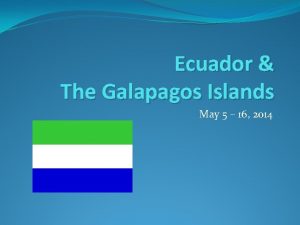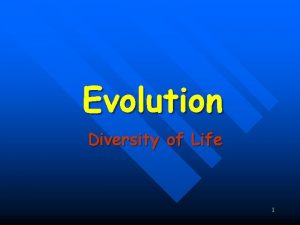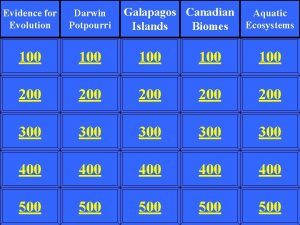GALAPAGOS ISLANDS GALAPAGOS ISLANDS GALAPAGOS ISLANDS GALAPAGOS ISLANDS

































- Slides: 33

GALAPAGOS ISLANDS

GALAPAGOS ISLANDS

GALAPAGOS ISLANDS

GALAPAGOS ISLANDS

GALAPAGOS ISLANDS

ADAPTIVE RADIATION (An Ancestral Species Diversifies into Separate Species, each Adapted to a Different Ecological Niche)

MECHANISM: NATURAL SELECTION 1) Organisms reproduce 2) Variation exists in populations, and is heritable 3) More offspring are produced each generation than can be supported by the environment 4) Some individuals, because of their physical or behavioral traits, have a higher chance of surviving than other individuals

OBSERVING NATURAL SELECTION

OBSERVING NATURAL SELECTION I Peppered Moth (Biston betularia) Biston betularia var. carbonaria Biston betularia var. typica

OBSERVING NATURAL SELECTION I Dark Bark 3 Light Bark

OBSERVING NATURAL SELECTION I England: Industrial Revolution 1800 1900

OBSERVING NATURAL SELECTION II Brown Anole (Anole sagrei) 5 10 8 9 6 7 Anoles (Anolis): 150 species in the Caribbean Islands

Observed Relationship of Hind Limb Length to Vegetation in Brown Anoles (Anolis sagrei) 13 11 14 12

Observed Relationship of Hind Limb Length to Vegetation in Brown Anoles (Anolis sagrei) Fig. 4. 13 in Molles 2008

TESTING FOR NATURAL SELECTION Introduction of Brown Anole Populations from Staniel Cay Island to 14 Caribbean Islands with NO PREEXISTING Anole Populations 15 Brown Anole (Anolis sangrei)

10 -14 Years Later. . Fig. 4. 12 in Molles 2008

Phenotypic Plasticity or Ecotypic Difference?

A TEST FOR HERITABILITY

OBSERVING NATURAL SELECTION III Trees in Soapberry Family (Sapindaceae) 17 18 Species Native to U. S. (3) Soapberry Bug (Jadera haematoloma) 19 Species Introduced to U. S. (3)

Size of Fruit in Native and Introduced Soapberries Florida Fig. 4. 15 in Molles 2008 South Central U. S.

Observed Relationship between Beak Length of Soapberry Bug and Fruit Radius (Both in FL, TX) Fig. 4. 16 in Molles 2008

Question: Phenotypic Plasticity (= Developmental)? Ecotype (with Genetic Basis)?

Lab Experiment to Test for Heritability of Beak Length • Rear Juveniles Bugs with Small Beaks on Large Fruited Soapberries • Rear Juvenile Bugs with Large Beaks on Small Fruited Soapberries

Results

Types of Natural Selection in Populations: DIRECTIONAL SELECTION 20 22 21 24

FITNESS (Number of Offspring Contributed by an Individual Relative to Number of Offspring Contributed by Other Members of the Population) 22 20 21 24 Which Members of this Rabbit Population have Higher Fitness?

Forms of Natural Selection in Populations: DIRECTIONAL SELECTION Fig. 4. 9 in Molles 2013

Forms of Natural Selection in Populations: DISRUPTIVE SELECTION 20 23 22 21 24

FITNESS (Number of Offspring Contributed by an Individual Relative to Number of Offspring Contributed by Other Members of the Population) 22 20 21 23 Which Members of this Rabbit Population have Higher Fitness?

Forms of Natural Selection in Populations: DISRUPTIVE SELECTION Fig. 4. 9 in Molles 2013

Forms of Natural Selection in Populations: STABILIZING SELECTION 20 22 Fig. 8. 15 in Molles 2006 21

FITNESS (Number of Offspring Contributed by an Individual Relative to Number of Offspring Contributed by Other Members of the Population) 22 20 21 Which Members of this Rabbit Population have Higher Fitness?

Forms of Natural Selection in Populations: STABILIZING SELECTION Fig. 4. 9 in Molles 2013
 Galapagos islands
Galapagos islands Galapagos pepper
Galapagos pepper Demographic stochasticity
Demographic stochasticity El relieve de galápagos
El relieve de galápagos Islas galpagos
Islas galpagos Galapagos finches evolved partly due to
Galapagos finches evolved partly due to Galapagos finches evolved partly due to
Galapagos finches evolved partly due to Galapagos penguin habitat map
Galapagos penguin habitat map Mapa conceptual de los ecosistemas del ecuador
Mapa conceptual de los ecosistemas del ecuador Cual es la importancia de las plantas sin semilla
Cual es la importancia de las plantas sin semilla Pisos climaticos de galapagos
Pisos climaticos de galapagos Galapagos carpenter bee
Galapagos carpenter bee Tortoise classification
Tortoise classification Galapagos spreading center
Galapagos spreading center Galapagos turtle lifespan
Galapagos turtle lifespan Brief history of computer graphics
Brief history of computer graphics Lugares turisticos ecuador
Lugares turisticos ecuador Arctocefali
Arctocefali Galápagos tortoise
Galápagos tortoise Population dynamics
Population dynamics Beaks of finches diagram
Beaks of finches diagram Darwiniothamnus
Darwiniothamnus Alimentacion de galapagos
Alimentacion de galapagos Iguana adaptations
Iguana adaptations Trobriand islands
Trobriand islands Bionicle nui kopen
Bionicle nui kopen Deforestation in andaman and nicobar islands
Deforestation in andaman and nicobar islands Insert clustered column chart
Insert clustered column chart Robotized islands automation
Robotized islands automation Highest peak in the world
Highest peak in the world Effects of logging in solomon islands
Effects of logging in solomon islands Study island skateboard game
Study island skateboard game Seattle to virgin islands
Seattle to virgin islands Is japan in northern hemisphere
Is japan in northern hemisphere
